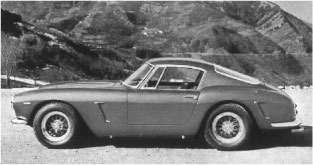Exhaust and Oil Lines

10/19/01
Exhaust and Oil Lines

My exhaust system from Stebro arrived this week. When I unwrapped it, I realized it was missing the front y-pipe. I called Dan at Stebro to find out what happened. He was waiting on a 330 header pipe to make absolute sure they would fit my America.

As you can see from this picture, the angles of the header pipes are different, and if the y-pipe is not accurately welded, a leak proof seal will not be made. Dan and I discussed having him send the y-pipe partially completed without the flanges welded in place. After I receive the pipe, I can bolt everything in place, and tack weld the flange to insure a perfect fit. I would hate for them to make competed pipes, only to find the flanges off by a degree or two for a poor fit. It will be a little more work for me, but I think it may be worth the extra step. We’ll see what he thinks when he gets the header pipes.

The rest of the exhaust looks great. I got a little concerned when I noticed a magnet stuck to the pipes, but after going to the Stebro website, I found that they use 409 stainless for the pipes, and 304 for the mufflers. After some research on the Internet, I learned 409 stainless IS magnetic, but still resistant to rust. The nickel added to 304 stainless is what makes it non magnetic. Stebro’s competition uses non-magnetic stainless for the whole system, but is there a difference? I don’t know, but I guess time will tell. A LIFETIME LIMITED WARRANTY from Stebro is enough for me to out weigh the savings in price compared to using Timevalve.

Continuing the task of prepping the engine for the initial start up, I installed the oil lines. I made these lines up months ago, and now it was time to put them on the engine.

There are two different types of fittings. One is large, like the first picture, and the second type has a very small orifice. François warned me to make sure the small opening oil line is for the oil pressure gauge, and a mistake he has seen in restorations is installing the wrong fitting for the wrong application. Using the larger-opening line for the oil pressure gauge will make the needle bounce, and give an inaccurate reading.

Since my steering column was not completely installed, it was easy to tighten the oil line to the rear of the gauge.

The longer nut of the two oil pressure fittings goes to the back of the gauge. I found this out the hard way by having to take it apart again to turn the hose around. If it’s backwards, the fitting on the back of the engine won’t tighten down far enough to seal very well.

This is a shot looking down the left side of the engine compartment. The brown oil line screws into a fitting on the oil pan that’s painted silver. Although this picture gives a clear shot of the fitting, I had to remove an exhaust header to gain access to this area! (Note to self: install oil lines before header pipes!)

The rest of the oil lines were installed without problems, while care was taken to clear the pulleys, and center link in the suspension.
Although I don’t have pictures, the front springs were installed, and the rear brake lines were bent and installed. Francois came over to install the front springs. It definitely was a two man job, so I couldn’t help him and take pictures! The next time I go to the shop, I’ll be filling the brake system with fluid, and bleeding the booster, and calipers! I guess the next thing to obsess about is tires!
Previous Restoration Day
Next Restoration Day
Ferrari Home Page
www.tomyang.net




